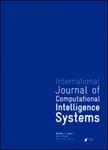版权所有:内蒙古大学图书馆 技术提供:维普资讯• 智图
内蒙古自治区呼和浩特市赛罕区大学西街235号 邮编: 010021

作者机构:Visvesvaraya Natl Inst Technol South Ambazari Rd Nagpur 4400101 Maharashtra India
出 版 物:《INTERNATIONAL JOURNAL OF COMPUTATIONAL INTELLIGENCE SYSTEMS》 (国际计算智能系统杂志)
年 卷 期:2016年第9卷第2期
页 面:351-375页
核心收录:
学科分类:08[工学] 0812[工学-计算机科学与技术(可授工学、理学学位)]
主 题:Image forensics Cloning detection Discrete Wavelet Transform (DWT) Discrete Cosine Transform (DCT) Singular Value Decomposition (SVD) Principal Component Analysis (PCA)
摘 要:With the easy availability of image processing and image editing tools, the cases of forgery have been raised in the last few years. Now days it is very difficult for a viewer and judicial authorities to verify authenticate a digital image. Cloning or copy-move technique is widely used as forgery to conceal the desired object. To hide various type of forgery like Splicing (compositing), cloning (copy-move) etc., various post-forgery techniques like blurring, intensity variation, noise addition etc. are applied. To overcome the mentioned difficulty, a forgery detection tool must comprise of several detection algorithms which work collaboratively to detect all the possible alterations and provide a single decision. This paper presents a universal tool comprising PCA, DWT, DWT-DCT, DWT-DCTSVD, DFT, DCT, DWT-DCT (QCD) techniques used for reduction, feature vector calculation and thus detecting forgery. Due to varied, erroneous, heterogeneous output of different reduction methods, it is very difficult to recognize the pre-processing done with available various classification systems. A fuzzy inference system has been developed to authenticate, find extend of forgery, parameters of forged area, robustness and accuracy of all the 7 detection tools, and the type of processing done on tempered image. Experimental results have shown that our classification system achieves accuracy of 94.12% as regards subjection to transformations like Blurring, Intensity Variation and Gaussian Noise Addition, JPEG compression, normal forgery (other random transformations). Two different membership functions are taken in this fuzzy system and different if-then rules are defined for classification of different types of pre-processing performed on the image.